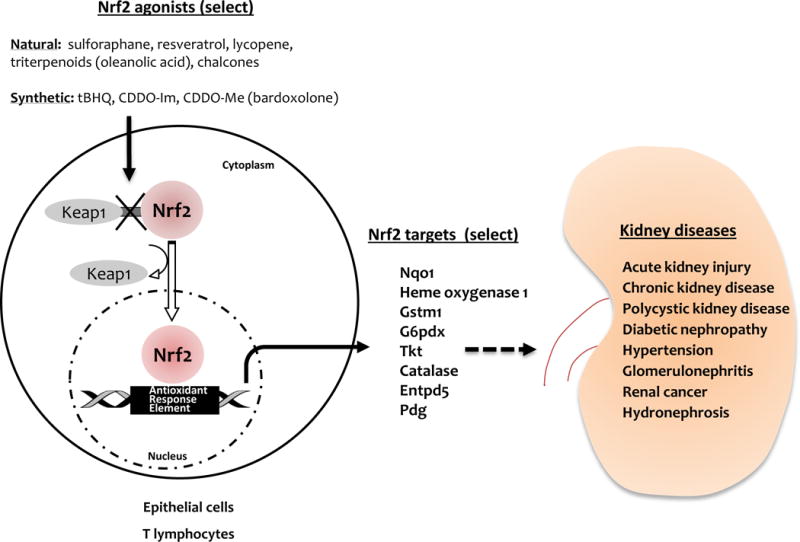Figure. Working model of Nrf2-Keap1 pathway in kidney diseases.

Natural and synthetic Nrf2 activators induce structural changes in Keap1 protein that compromises its ability to retain Nrf2 in the cytoplasm. This allows nuclear translocation of Nrf2 where it binds to antioxidant response elements (AREs) to initiate transcription of multiple target genes (Gstm1, HO-1, Catalase, Entpd5, G6pdx, Pdg, Tkt, Nqo1 etc.) important for antioxidant, xenobiotic and homeostatic responses. Targeting these Nrf2 responses could provide significant protection and therapy in kidney diseases including acute kidney injury, chronic kidney disease, polycystic kidney disease, diabetic nephropathy, hypertension, glomerulonephritis, renal cancer and hydronephrosis.
